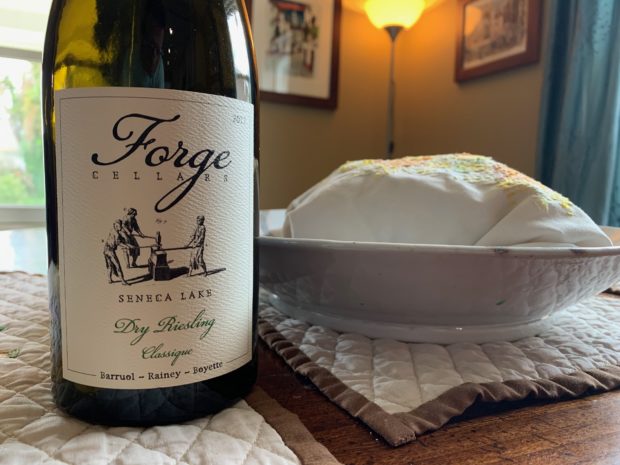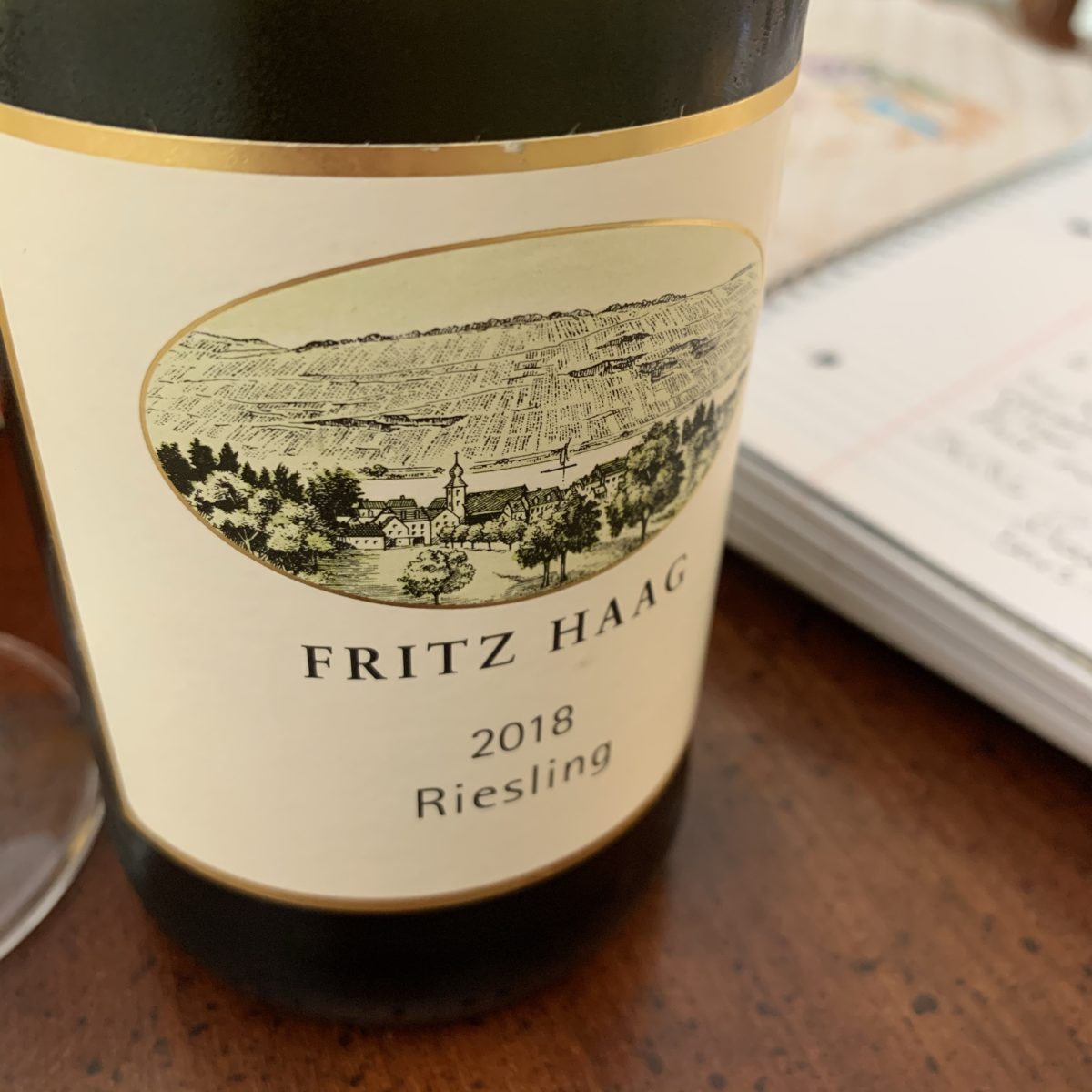According to the label, this “bone dry” riesling (0.3% residual sugar) was grown in soil rich with shale, gravelly loam, and clay with limestone. The first thing you notice on this wine (other than its slightly amber-straw color) is the nose. If it has nothing else, it has a bouquet enticing enough to draw you in: honey, mead, and apple. Medium to heavy bodied, on the mouth you’ll find lemon-lime soda and pear, with a tart, mineral and lemon finish.
2017 Forge Cellars Dry Riesling (Seneca Lake)

